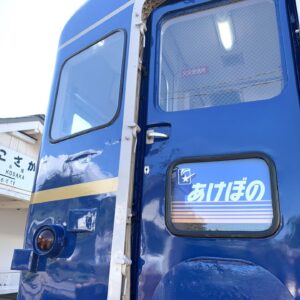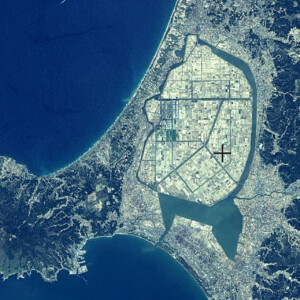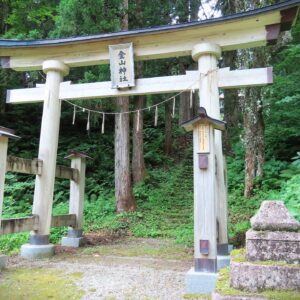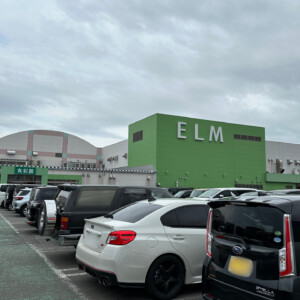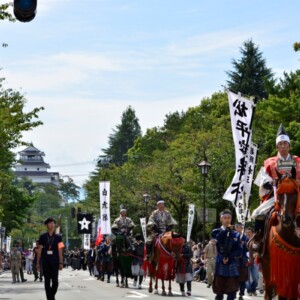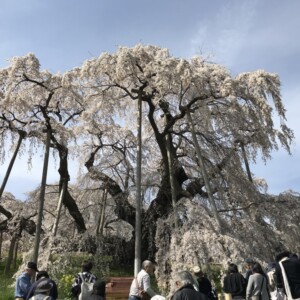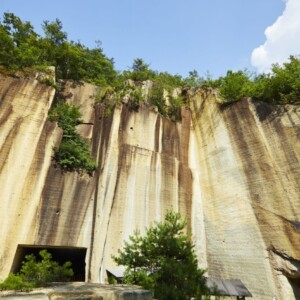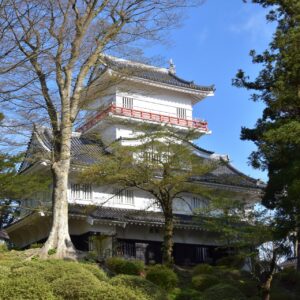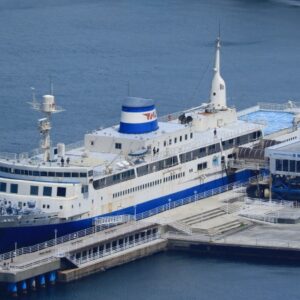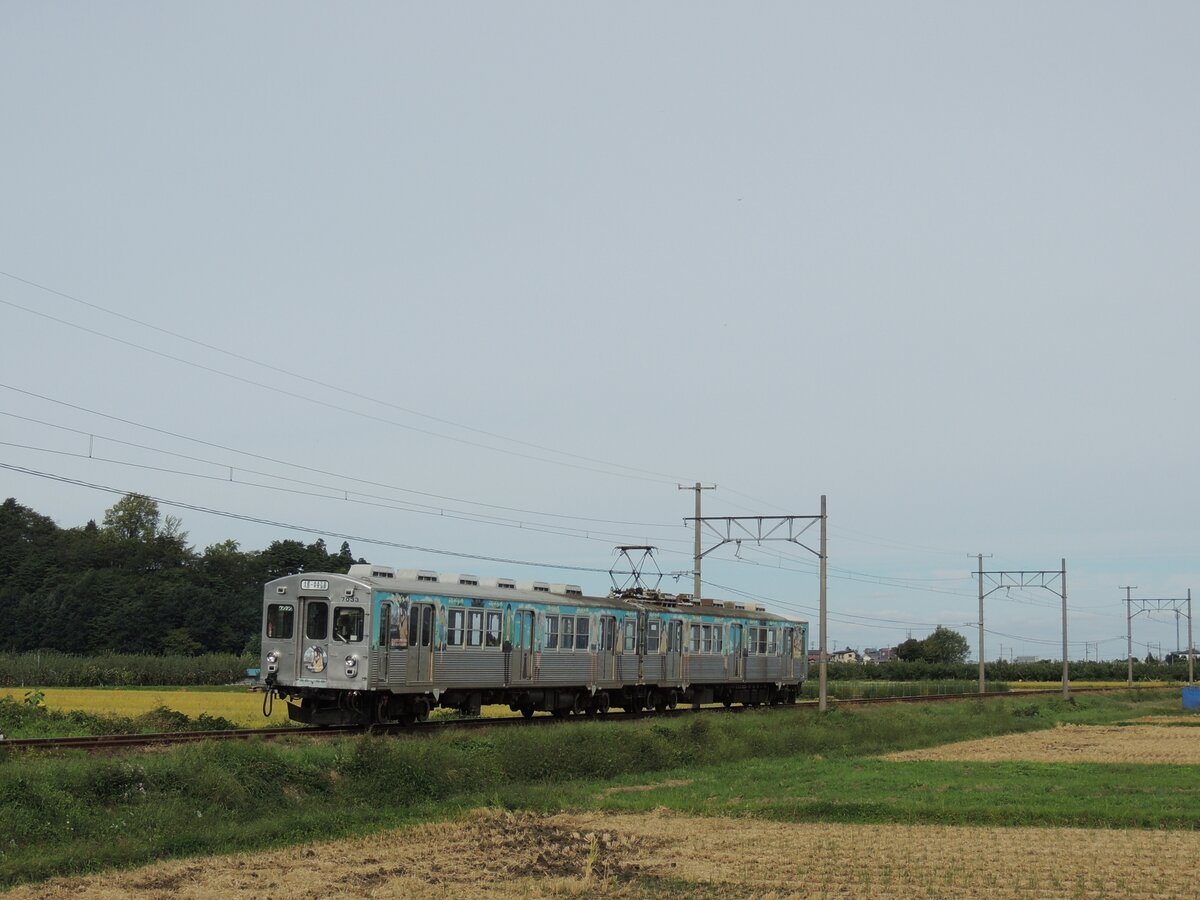
What kind of route was the Konan Railway Owani Line, which was effectively decided to abolish it? [Aomori Prefecture]
table of contents
Konan Railway has announced its intention to suspend train operations as of the end of fiscal year 2027 regarding
the Owani Line, a railway line operated by Railway, private railway in Aomori prefecture. I did. Although the term "suspension" is used only, it is considered to be abandoned in fact.
What exactly was the Owani Line?
What is the Ocromi Line?
The Owani Line is a Konan Railway line that connects Owani Station in Owani Town, Aomori Prefecture to Chuo Hirosaki Station in Hirosaki City.
It is a railway that runs between apple orchards, which is rare nationwide, and is nicknamed
Apple Field Railway There are 14 stations on the 13.9km long line.
Chuo Hirosaki Station is a completely different station from Hirosaki Station on the JR Ou Main Line, and you will need to walk about 1.5km to get from Hirosaki Station to Chuo Hirosaki Station.
Chuo Hirosaki Station is closer to Hirosaki Castle than Hirosaki Station, which suggests that the area around Chuo Hirosaki Station was originally located in the center of Hirosaki, as the station name suggests.
The Owani Line trains use 7000 series trains transferred from Tokyu Railway (now Tokyu Railway), a major private railway in the metropolitan area.
The car still has advertisements from the Tokyu era.
The hanging rings inside the car are inspired by apples and Mt. Iwaki, with only one heart-shaped hanging ring per car.
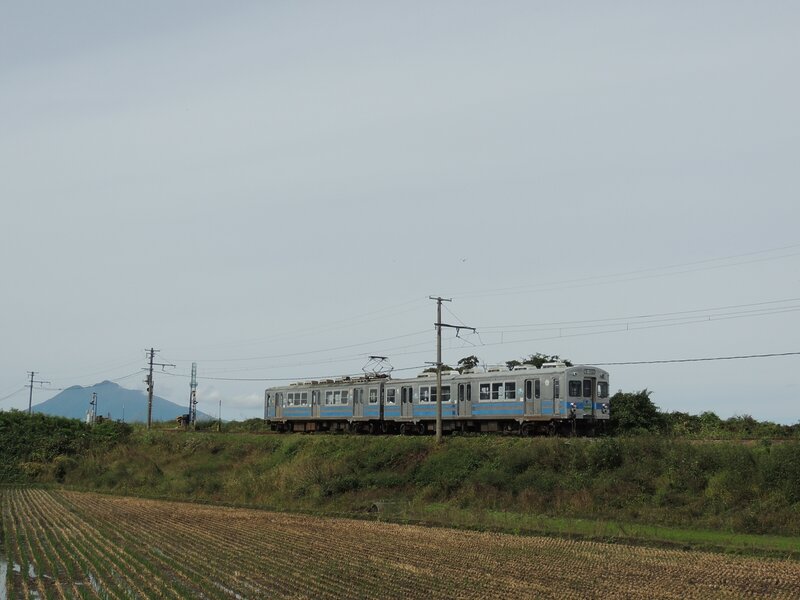
The Owani Line is used for commuting to high schools along the line, and for sightseeing, and has been responsible for transporting passengers near Hirosaki City for many years.
Konan Railway has announced that
train operations suspended of fiscal year 2027 about three years after this (February Although it is a term used as a hiatus, it is almost certain that local governments supporting the Konan Railway and the Konan Railway do not have the financial resources to recover from the hiatus in the future, and are deemed to be abandoned Masu.
Opened as a line for the Hirosaki Electric Railway
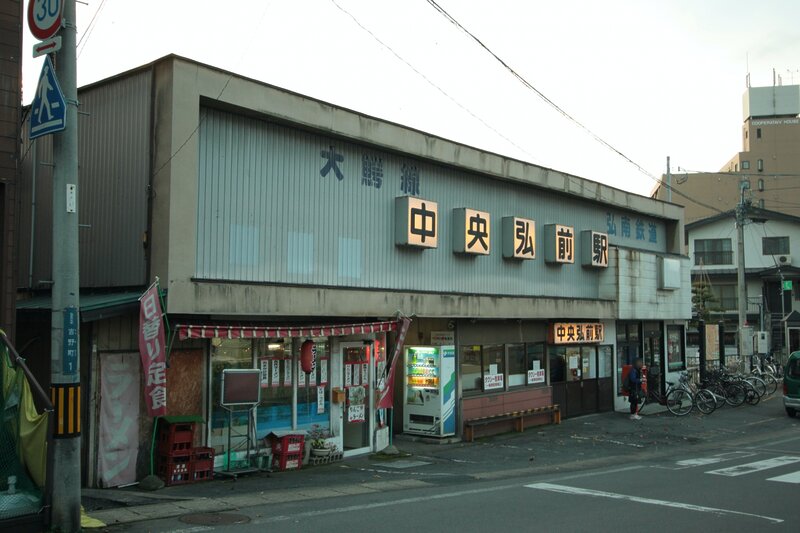
The Owani Line was opened in 1952, and was opened by a company called Hirosaki Electric Railway
At that time, traffic conditions around Hirosaki were poor, and buses were suspended during the winter when snow was piled up.
The main trains that run on the Ou Main Line of the JNR (now JR) were trains that run mid- and long distances, such as freight trains and express trains, and the number of local trains was small.
At the time, the company was founded by the then Mayor Hirosaki, and was teaming up with local influential people and Mitsubishi Electric, which was focusing on developing the railway system, and was established in July 1949. Hirosaki Electric Railway was Hirosaki Electric Railway, and Hirosaki Electric. The Owani Line opened in January 1952 by the railway.
The plan was to open the section from Owani Station to Chuo Hirosaki Station as the first phase, and the second phase of the line from Chuo Hirosaki Station to Itanaya Station on the Gono Line of the JNR.
A Meya Line was also planned, which branches off from the Owani Line at Nishihirosaki Station (now Hirosaki Gakuin Daimae Station) and connects to Tashiro (Nishimeya Village).
However, only the first term has actually opened to this day.
In addition, this article introduces the Ou Main Line, a route parallel to the Owani Line, so please take a look.
The Owani Line is based on the Konan Railway line.
The Owani Line was finally opened, but its management is difficult, perhaps because the entire section from Owani Station to Chuo Hirosaki Station is parallel to the Owani Station (now Owani Onsen Station) and Hirosaki Station on the Japan National Railways Ou Main Line. It was something.
Also, in 1953, the year after its opening, buses began operating all year round.
The Owani Line has never been able to record a profit since its opening, and the Owani Line was acquired by the Konan Railway, a private railway in Aomori Prefecture.
It was in 1970.
Hirosaki Electric Railway has been dissolved and has completed its short role for approximately 20 years.
The Konan Railway was established in March 1926, at the end of the Taisho period, and opened between Hirosaki Station and Tsugaru Onoe Station in 1927, and extended to Kuroishi Station after the war in 1950, and the entire Konan Line was lined up. It had opened.
The privately-owned company Konan Railway took over the management of the Owani Line, which had been in the red since its opening, because the then president took into consideration that the Owani Line was still necessary for its customers and local development. It's been done.
In addition, the Konan Railway also received the Japan National Railways Kuroishi Line (Kawabe Station to Kuroishi Station), which was designated as a specific local transport line (a line with poor usage conditions) and should be abolished.
This was also in response to a request from a local government to continue the Kuroishi Line to the Konan Railway.
There are only a few cases where specific local transportation lines of the JNR, which can easily be expected to be in a loss-making state, have been converted to private railway lines rather than third sector (companies jointly invested by the national and local governments and private sectors).
However, even after the conversion to the Konan Railway, the Kuroishi Line was difficult to manage, and it was abolished in 1998.
First announcement of abolishment
In 1974, there were
approximately 3.9 million However, the number of users will decrease due to the socialization of cars, a decline in population along the line, a decrease in schools along the line, and a reduction in student capacity.
Although there are multiple schools along the line, some schools operate school buses, while others use the car driven by family members, so all students attending school use the Owani Line. It's not like I'm doing it.
In 2012, the number of users per year fell to approximately 580,000
Therefore, at its shareholders' meeting in June 2013, the Konan Railway announced its intention to abolish the Owani Line in March 2017.
The Konan Railway has already received support from Aomori Prefecture and local governments along the line since fiscal 2004, and it seems that the president felt sad to put a burden on local governments any further.
Although the policy to abolish the system was withdrawn a month later, it is clear that further support from local governments along the Konan Railway is essential for the survival of the Owani Line.
In August, a survival strategy council was established between local governments, economic organizations and users along the line, and a meeting was held to discuss management improvement measures and support plans.
Giving up on continuing the operation
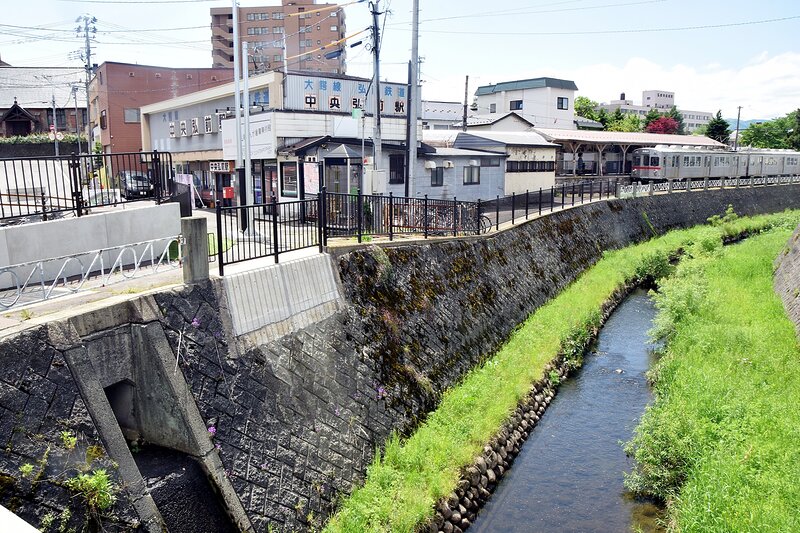
Since then, the Konan Railway has continued to be difficult to manage, and in 2017 the Konan Line also fell into a deficit, so the management method of compensated for the Owani Line's deficit with the Konan Line's surplus has reached its limit. .
An event that symbolizes the difficulties of management was a derailment accident that occurred on the Owani Line in August 2023.
The cause of the derailment was determined to be wear on the rails caused by friction with the wheels, and the train was forced to suspend service for approximately three weeks.
The following September, an abnormality was found on the rail, and the service was suspended for two months.
This shows that there is also a lack of costs and personnel for maintaining the rail.
Additionally, a total of two and a half months of suspensions led to a decrease in users, with only 270,000 .
The number is now less than a tenth of the peak, and the number of users, which is less than 1,000 per day, is a level that indicates that it is extremely difficult to maintain the railway.
In addition to this situation, there is a decline in population along the line, rising electricity bills and labor costs, and it is difficult to secure the personnel necessary to ensure safe transportation, and management improvements are not expected . In Monday, the Konan Railway offered to suspend the Owani Line , and local governments along the line also expressed their understanding that it would be suspended.
The Konan Railway has finally given up on the survival of the Owani Line and the support of the line itself.
Legally, notification of abolishment of railway lines is considered to be more than one year before the scheduled date of repeal.
Therefore, if the Konan Railway is inclined to do so, it would be possible to abolish the Owani Line just over a year from now, for example, at the end of March 2026.
However, the Konan Railway has proposed a three-year grace period and suspend it at the end of fiscal year 2027 (end of March 2028).
This is explained as an intention to continue operating on the Owani Line until students who will be entering high school in the next spring graduate.
This can be said to be a sign of the sense of responsibility of the Konan Railway, which has been responsible for public transportation for many years since its establishment during the Taisho period.
Local governments along the line have also agreed to support the Konan Railway until the end of fiscal year 2027, and it is expected that trains will continue to operate for another three years.
The future of the Owani Line and Konan Railway
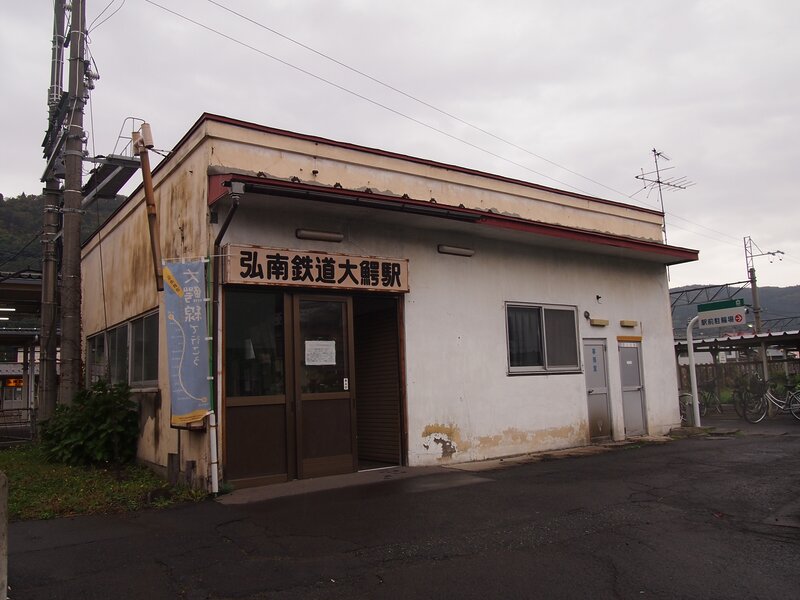
After the suspension and de facto abolishment of the Owani Line, buses are expected to operate as alternative trains on the Owani Line, but in order to operate the bus, vehicles and crews will be required, so we will need to secure them, so we will be able to replace them. Bus plans will need to be made as soon as possible.
Furthermore, after suspending the Owani Line, which had been a chronic deficit, the Konan Railway will invest personnel and funds on the Konan Line to try to rebuild its management.
It is unfortunate that the Owani Line has been abolished, but we hope that the Konan Line and bus routes that replace the Owani Line will last for a long time.


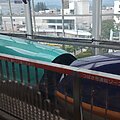

![A train with a locomotive and passenger train! ? Trains with a strange formation [Aomori, Akita, Iwate] 28881650_m](https://jp.neft.asia/wp-content/uploads/2025/01/28881650_m-150x150.jpg)

![[Recommended Autumn Festivals: Aomori Edition] Introducing the Aomori autumn festivals and local gourmet food! Aomori Autumn Festival Catch](https://jp.neft.asia/wp-content/uploads/2024/08/5113a23dc13b4a4879e8916209d8913c-150x150.jpg)
![A detailed introduction to the relationship with "Toyobai" and "Hohai Bushi" which are regulars at competitions! [Aomori Prefecture] Miura Sake Brewery](https://jp.neft.asia/wp-content/uploads/2022/11/795316b92fc766b0181f6fef074f03fa-6-150x150.jpg)
![[Shiogama City, Miyagi Prefecture] “Shiogama Seafood Intermediate Wholesaler Market” has the best tuna catch in Japan! My seafood bowl is all you want Bowl of rice topped with sashimi](https://jp.neft.asia/wp-content/uploads/2018/03/5c22812f9b5529f3db877cdd36c2ccc2_s-150x150.jpg)
![[Morioka City, Iwate Prefecture] What is Akabu? Introducing new sake made by young people in Iwate Akabu Sake Brewery](https://jp.neft.asia/wp-content/uploads/2022/02/IMG_8760-150x150.jpg)
![[Hirosaki City, Aomori Prefecture] Starbucks Coffee Hirosaki Koen-mae store has a Taisho romance feel. “Sakura light-up” spreads out in front of you on winter nights 2 Starbucks Hirosaki Koenmae Store and Sakura Light Up 2](https://jp.neft.asia/wp-content/uploads/2023/02/34d68444995e05888ffd2d2b8487857b-150x150.jpg)
![[Series ⑥: The role of the first nine years and the role of the second three years] From the internal conflict in the Kiyohara clan to the battle for the family succession, the role of the third year after it was considered a private war Three years later 1](https://jp.neft.asia/wp-content/uploads/2023/12/c0edc0a05afd06375d9f91bd4b7c9472-150x150.jpg)

